Who is Atatürk and why is he so important to Turkish people?
He was not only a Turkish leader who led his country’s war against aggressors but also a peace lover who sent very important messages to other nations about the necessity of a peaceful and mutually respectful co-existance of all nations on the same planet.
Ataturk
“Peace at Home, Peace in the World.” M. Kemal Atatürk
Mustafa Kemal Atatürk, the founder of the Turkish Republic and it’s first President, is the national hero of Turkey. He has founded the modern
Turkish Republic out of the ashes of the Ottoman Empire; which was in recession period and came to known as the “the sick man of Europe” at the end of the 18th century.
He created a secular state understanding which is unique among Islamic countries. His modern perspective created a new country and a nation with great new visions and aims to achieve ahead. Mustafa Kemal Atatürk differed from the dictators of his age in two significant respects. First of all, he was a great reformer in terms of changing a country fundamentally in every aspect and making the whole nation believe in these changes in a very short time. And secondly his strong believes in Peace, not only in his own country but all around the world, makes him the most successful leader in the world in the eyes of Turkish People and gives profound inspiration to the world at large. His foreign policy was based not on expansion but on retraction of frontiers; and his home policy was to built a political system that will regenerate his country by transforming the old sprawling Ottoman Empire into a new compact Turkish Republic. One of the best books written about Atatürk from a foreigner’s point of view is the book titled ” The Rebirth of a Nation” by Lord Kinross.
Once you step in Turkey, you will see his statues, busts and millions of his photos hung all over the country. His name has been given to countless institutions, buildings, streets, parks and suchlike. Foreigners unaware of his accomplishments might think that the Turks are a bit obsessed with a man now dead for approximately 60 years but no other nation on earth has loved a leader as much as the Turkish nation loves Mustafa Kemal Atatürk.
Emerging as a military hero at the Dardanelles in 1915, he became the charismatic leader of the Turkish national liberation struggle in 1919. As a triumphant commander who crushed the invaders of his country following a series of impressive victories against all odds, he led his nation to full independence. Neither The Turkish Republic nor the Ottoman Empire has never been a colony in the history. At the 1st world war The Ottoman Empire formed allies with Germany and Austria-Hungary so lost the war with them. The wars that are mentioned on this page were against the invading forces after the 1st world war. Mostly against France and Britain. But these forces couldn’t succeed totally because Atatürk started the liberation wars right after they started the invasions and he managed to save at least the lands of today’s Turkey. And although those day’s Ottoman Empire is today’s more than 30 countries, a compact Turkish Republic compared to the Ottoman Empire was formed with the victories of the common Turkish people who didn’t hesitate to die for their country at the battle field and of course with the courage, intelligence, and most of all strong believes of their national hero Mustafa Kemal Atatürk in independence, peace and in Turkish people.
He also put an end to the Ottoman dynasty who had ruled the Empire for more than six centuries – and created the Republic of Turkey in 1923, establishing a new government truly representative of the nation’s will.
As President for 15 years, until his death in 1938, Mustafa Kemal Atatürk introduced a broad range of swift and sweeping reforms – in the political, social, legal, economic, and cultural spheres – virtually unparalleled to any other country.
The world honours his memory as a foremost peacemaker who upheld the principles of humanism and the vision of a united humanity. Tributes have been offered to him through the decades by such world statesmen as lloyd George, Churchill, Roosevelt, Nehru, de Gaulle, Adenauer, Bourguiba, Nasser, Kennedy, and countless others. A White House statement, issued on the occasion of “The Atatürk Centennial” in 1981, pays homage to him as “a great leader in times of war and peace”. It is fitting that there should be high praise for Atatürk, an extraordinary leader of modern times, who said in 1933: “I look to the world with an open heart full of pure feelings and friendship”.
His life
His name was “Mustafa” and was given the name “Kemal” meaning perfection, by his teacher in the military school. Lastly in 1934 November 24th, everyone had to take a surname and the “Atatürk” surname, meaning the father of Turks, was given to him by the Turkish people in accordance with his reforms and his success in creating a modern Turkish country.
He was born in l9th May 1881 of humble background in Kocakasım ward of Saloniki, within the Ottoman Empire’s borders at that time but in Greece at present. His father was a customs officer, later becoming a timber merchant. Following his father’s sudden death, a family having to fend for itself was left behind.
As a child Mustafa finished primary school in Saloniki, going on to secondary education at Rucholigè School. Following the death of his father, his uncle took on the responsibility of looking after Mustafa, his only sister and his widowed mother. Despite the opposition of his uncle, Mustafa succeeded in entering the Military School in Istanbul. He completed his studies with very high grades, and was accepted into the School of the General Staff. In December 1905 he was commissioned as General Staff Captain.
Throughout his studies Mustafa Kemal consistently proved himself to be a conscientious, aspiring and diligent student who was particularly interested in difficult and complex problems. Whilst at military school in Saloniki, he showed himself in mathematics and literature. At the same time, and due mainly to his own efforts he started to learn French, in which he made considerable progress. Yet another trait of character which began to show through in his early youth was Mustafa’s ability to show initiative and exceptionally his ability to give orders, whilst at the same time maintaining a sense of fraternity with his comrades. In the School of the General Staff he pondered long and hard over the hardship caused by the dictatorial rule of Abdulhamit. Just like his comrades at the school, Mustafa harboured the same feelings of disgust and rebelliousness towards the political regime of the Sultan. For this reason he did not hesitate for one moment about taking part in the secret underground activities going on at the General Staff School, directed towards the overthrow of the Yildiz Regime. He was one of the early members of the Young Turks movement and a front-runner in the revolution which demanded a constitutional government for the Ottoman Empire.
In 1908 a revolution led by the Young Turks forced Abdulhamit to restore the parliament and constitution. After a few months of constitutional rule, a counterrevolutionary effort to restore the sultan’s autocracy led the Young Turks to dethrone Abdulhamit completely in 1909. He was replaced by Mehmet (Resit) V (r. 1909-18), who was only a puppet of those controlling the government.
Rapid modernization continued during the Young Turk era (1908-18), with particular attention given to urbanization, agriculture, industry, communications, secularization of the state and the emancipation of women.
Between the years 1905 and 1918 Mustafa Kemal was deservedly awarded high ranking posts in the military chain of command. He proved to have special qualities in the organisation and management of this army of oppression, known as the Army of the Movement. In 1910 he lead the Turkish Forces during military manoeuvres in the Province of Picardy in France. In 1911 he fought in Tripoli against the Italians, and in 1914 whilst serving as Military Attaché in Sofia, he successfully drew the governments attention to the catastrophic results connected with Turkey’s entry into the war with Germany and its allies.
During World War I Ottoman empire took sides with Germany and Austria-Hungary. Mustafa fought against the Allied Forces on many fronts including the Dardanelles, the Russians on the Mus Front in the east and against the British in today’s Syria and Iraq. He was the Lieutenant colonel in charge of Infantry at Gallipoli Peninsula in 1915 and it is his genius defence tactics that did not give way to the allied forces (British, French, Anzacs – Australians and New Zealenders and Senegalese) for the capture of Dardanelles and eventually Bosphorus. His successes against the Allies were well received by the civilian population and he was acclaimed as the “Hero of Gallipoli”. Again during the World War I, he visited Germany as Military Adviser, together with hereditary Prince Vahdettin. At the time of signing the Armistice Declaration on the 30th October 1918 Mustafa Kemal remained at the head of his troops, a command given to him by the German General Liman von Sanders. His success and fast growing reputation disturbed the capital and to keep him under control he was promoted to the Pasha (General) position.
When the World War I ended however, the defeat of these Central Powers led to foreign occupation of the Ottoman Empire. Armies of the allied forces occupied nearly all of the country including Istanbul. Sultan and some people in the public were thinking of accepting either the American or British mandate. Atatürk, however, had a very different vision from them. He wanted Independence. So he left Istanbul with a small boat, namely Bandirma (a nice model of this boat can be seen at the Atatürk Museum, in Atatürk’s Mausoleum, Ankara) and came to Samsun (a coastal town in the Black Sea) on 19.May.1919 (later to be presented as the Turkish Youth Day, by Atatürk). This let to the Turkish War of Independence (1918-1923).
The fight against the victors of the First World War who had divided up the Ottoman Empire with the Treaty of Sevres signed on 10 August 1920, initially started with the militia forces called Kuva-yi Milliye. Turkish Assembly later initiated a regular army and achieving integration between the army and the militia, was able to conclude the war in victory.
In the years between 1918 and 1923 he was at the forefront of the Turkish War of Independence and involved with the eradication of the antiquated institutions of the Ottoman Empire and in laying the foundations of the new Turkish State. With the circular he published on 22 June 1919 at Amasya, he declared that “The freedom of the nation shall be restored with the resolve and determination of the nation itself” and called the meeting of the Sivas Congress. He convened Erzurum Congress during 23 July – 7 August 1919 and Sivas Congress during 4 – 11 September 1919, to organise and lift the morale of the people in its determined opposition to the Forces of the Entente who were occupying Anatolia, thus to define the path to be followed towards the freedom of the motherland. By the end of these conventions he had managed to convey the message that the idea and the ideals of outdated imperialism ought be dropped so that people within the national boundaries could make decisions in accordance with the principles and general guidelines of an effective national policy. He was met with great enthusiasm in Ankara on 27 December 1919.
The significant stages of the Turkish War of Independence under the Command of Mustafa Kemal are:
- Recapturing Sarıkamış, Kars and Gümrü
- Cukurova, Gazi Antep, Kahramanmaras, Sanlı Urfa defences (1919 – 1921)
- 1st Inonu Victory
- 2nd Inonu Victory
- Sakarya Victory
- Great Attack, Battle of the Chief Commander and the Great Victory
When Mustafa Kemal Atatürk united the Turkish Grand National Assembly on 23rd of April 1920 in Ankara, a significant step was taken on the way to establish the Turkish Republic. With the government of the Great National Assembly, of which he was the President, Mustafa Kemal fought the Forces of the Entente and the Sultan’s army which was in collaboration with the occupying forces. Finally, on the 9th September 1922 he succeeded in driving the Allied Forces back to Izmir, along with the other forces which had managed to penetrate the heartland of Anatolia. By this action he saved the country from invasion by foreign forces. On 1. November. 1922, the offices of the Sultan and caliph were severed from one another and the former was abolished. There was no longer any administrative ties with the Ottoman Empire. The Ottoman Sultan fled with a British boat. A new nation was starting to be born.
The War of Independence came to an end with the Treaty of Lausanne signed on 24th of July 1923, when the States of the Entente were obliged to recognise the territorial integrity of Turkey. So in quite a spectacular fashion Mustafa Kemal had achieved the first step in his reform programme, the creation of a sovereign and independent state.
Mustafa Kemal retired his military uniform and inspired the people to the second, an even greater task: Transformation of the country into the democratic, secular Republic of Turkey. He was elected as the head of the national assembly as well as the head of the government. The Grand National Assembly started to put the necessary legislative measures into practice so that the Independence War achieves its final aim.
On 29 October 1923, Turkish Republic was formally proclaimed and Atatürk was unanimously elected as its first President. On 30 October 1923, the first government of the Republic was formed by İsmet İnönü. Turkish Republic started to grow on the foundations of the twin principles “Sovereignty belongs unconditionally to the nation” and “Peace at home, Peace in the world”.
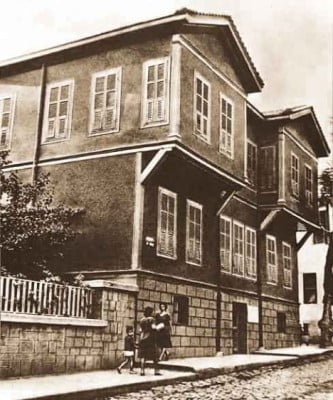


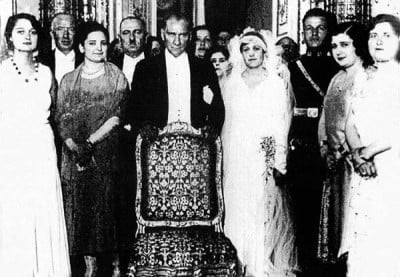
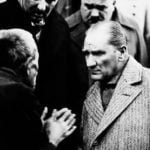
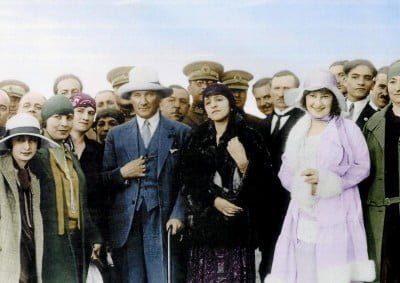
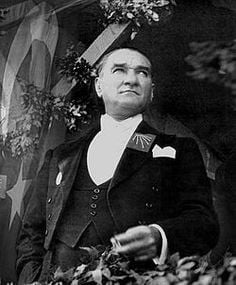

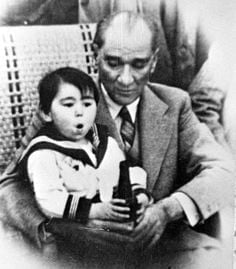
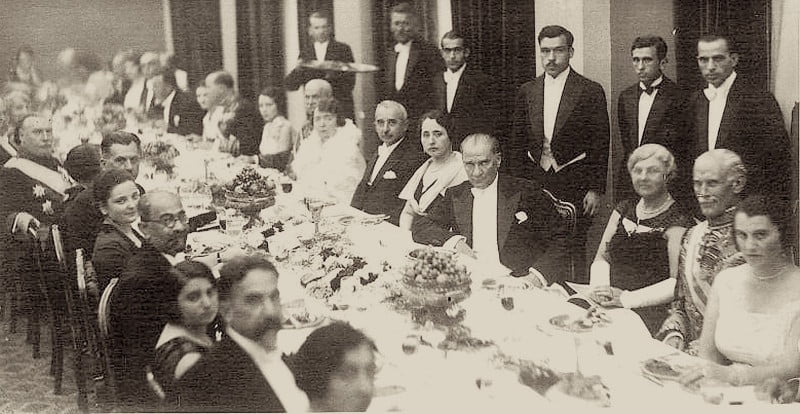

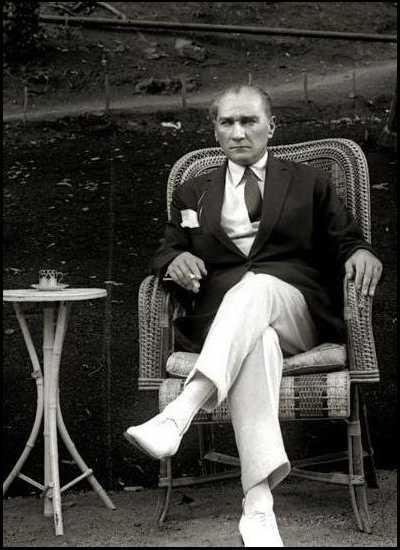
Comments